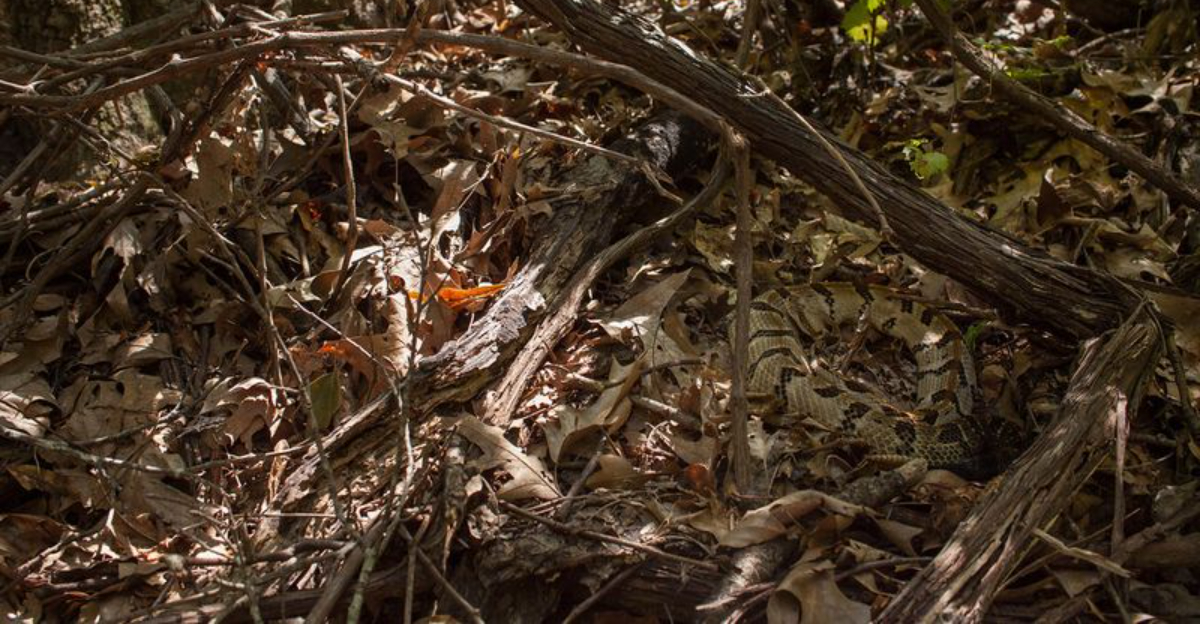Last summer, on a quiet trail in the Great Smoky Mountains, I nearly stepped on a perfectly camouflaged copperhead—only noticing it when a single, fluid movement betrayed its presence.
Tennessee’s copperheads are stealthy masters of concealment, blending into leaf-strewn forest floors as if invisible.
Understanding why they’re so hard to spot isn’t just fascinating—it could transform your next outdoor adventure from risky to informed.
1. Nature’s Perfect Camouflage Pattern
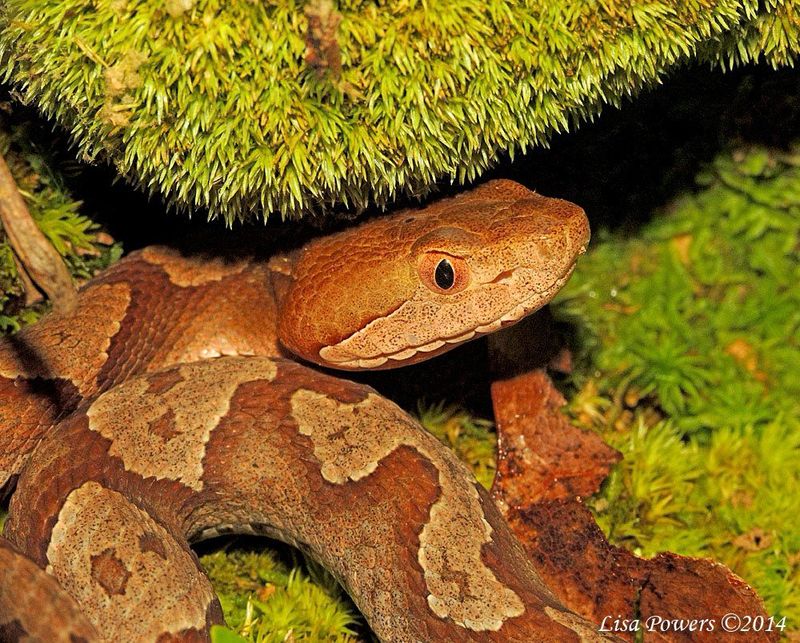
The hourglass-shaped copper and tan bands adorning these vipers aren’t just for show—they’re survival tools that break up the snake’s outline against forest floors. I once spent fifteen minutes photographing what I thought was just a pile of leaves, only to discover later that a copperhead had been posing for me the entire time!
Their coloration precisely matches Tennessee’s fallen oak and hickory leaves. The reddish-brown and beige patterns create a three-dimensional optical illusion that tricks your brain into seeing disconnected leaf fragments instead of a snake.
Even more impressive, their scales have a slightly rough texture that prevents light from reflecting off their bodies, eliminating the shine that might otherwise give away their position to predators or unsuspecting hikers like me.
2. Frozen In Place When Threatened
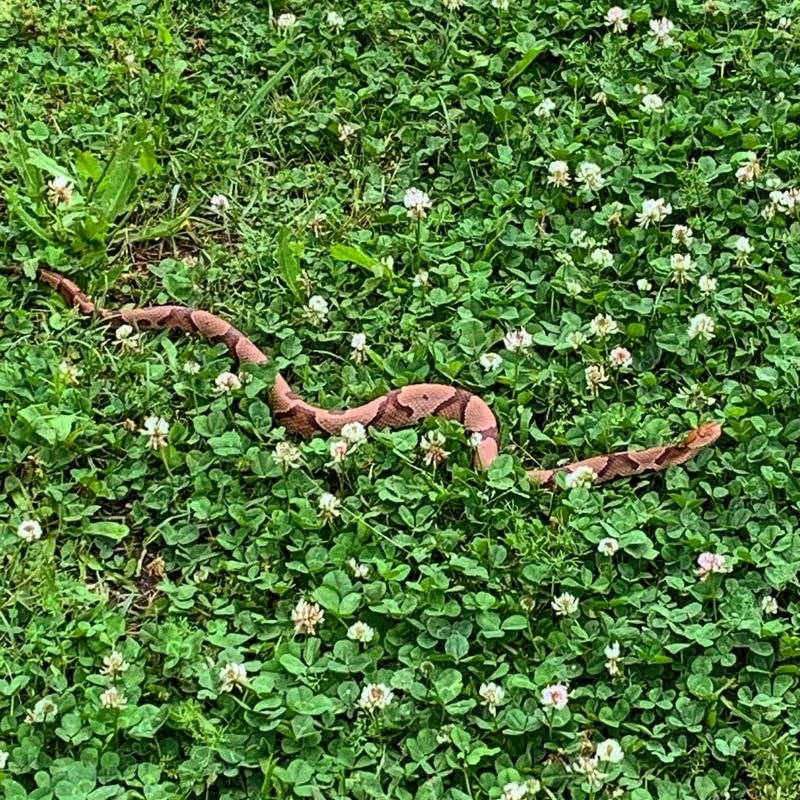
Unlike rattlesnakes that warn you with a buzz, copperheads employ the ultimate stealth tactic—absolute stillness. When I accidentally approached one while collecting firewood, the snake didn’t flee or strike; it simply froze, becoming virtually invisible.
Their ambush predator instincts serve them well in avoiding detection. Copperheads can remain motionless for hours, their muscles barely twitching as potential threats pass by. This behavior evolved as a hunting strategy but works equally well as a defense mechanism.
Most hikers’ eyes are trained to detect movement in their peripheral vision. By eliminating all movement, these crafty reptiles exploit a blind spot in our visual perception. Your brain literally filters them out of conscious awareness unless you’re specifically searching for their distinctive pattern.
3. Masters Of Leaf Litter Concealment
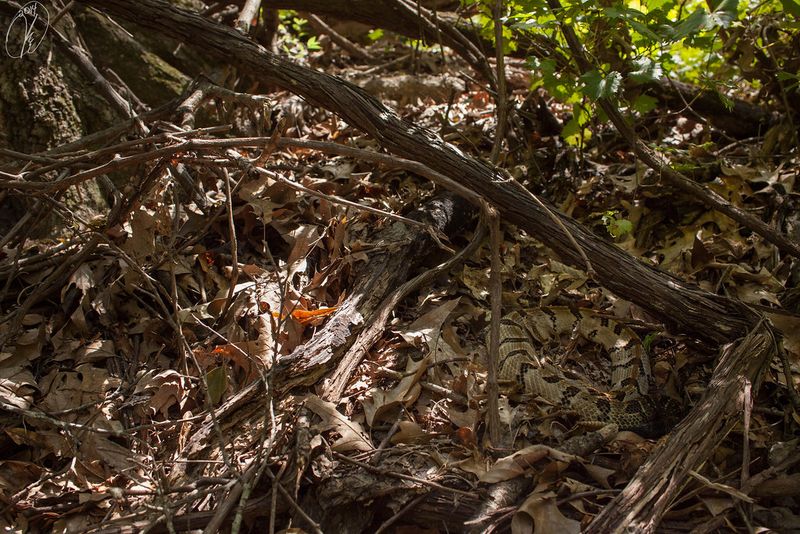
Forget needle in a haystack—try finding a copperhead in Tennessee’s thick forest floor covering! My guide once pointed directly at one during a nature walk, and I still couldn’t see it until I was uncomfortably close.
These snakes deliberately position themselves with just their heads peeking out from beneath leaf litter. Their triangular heads mimic the pointed shapes of fallen leaves, creating the perfect disguise. The scattered patterns of sunlight filtering through the forest canopy further fragments their appearance, casting dappled shadows that break up their outline.
Copperheads also frequently bury parts of their bodies, leaving only small sections visible. This partial concealment technique makes identifying their true size and position nearly impossible for the untrained eye wandering through Tennessee’s woodlands.
4. Nocturnal Hunters In Low Light
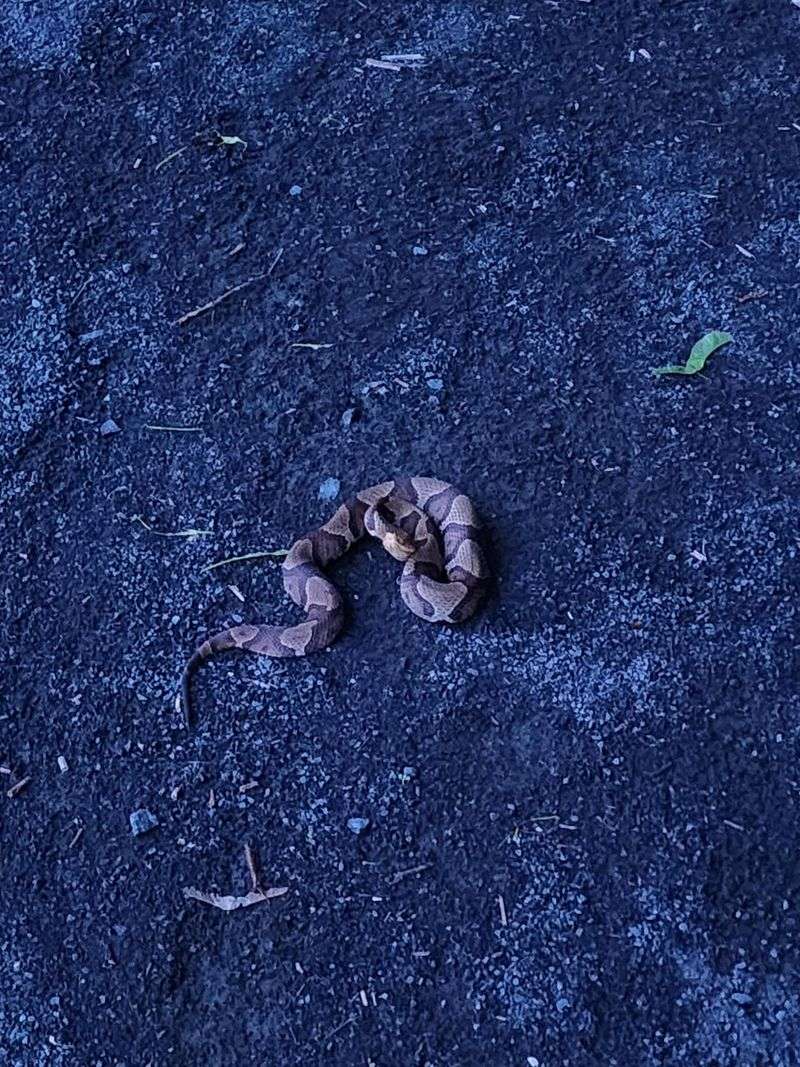
Bumping into a copperhead after sunset? That’s when I had my closest encounter! These crafty serpents shift to nighttime activity during hot Tennessee summers, making them even harder to detect in the dim light.
Their specialized heat-sensing pits allow them to navigate and hunt effectively in near-total darkness. While humans struggle to see anything in low light conditions, copperheads are perfectly adapted to operate when visibility is poor. The snake’s copper coloration appears darker at night, blending seamlessly with shadows on forest paths.
Copperheads are most active during the dangerous twilight hours when hikers are hurrying to finish trails before dark. Their increased movement coincides precisely with the time when human vision is most compromised—a perfect storm for accidental encounters on Tennessee’s popular hiking routes.
5. Silent Slitherers Without Warning
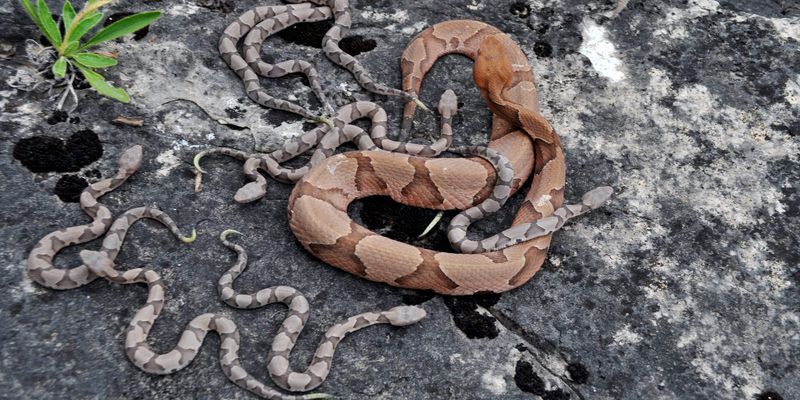
You’ll never hear a copperhead coming! Unlike their rattlesnake cousins, these stealthy predators move without making a sound. I’ve watched one glide silently across my campsite while my friends remained completely oblivious to its presence.
Their smooth, fluid movement creates minimal disturbance in surrounding vegetation. Each scale works in perfect coordination, allowing them to travel across even crispy fallen leaves without producing the telltale rustling sounds that might alert potential prey—or humans—to their presence.
Copperheads also lack the warning behaviors of other venomous snakes. They don’t hiss loudly, rattle their tails, or rear up before striking. This absence of warning signals means your first indication of a copperhead’s presence might be spotting it visually—which, given their other camouflage adaptations, often happens too late for comfort on Tennessee trails.
